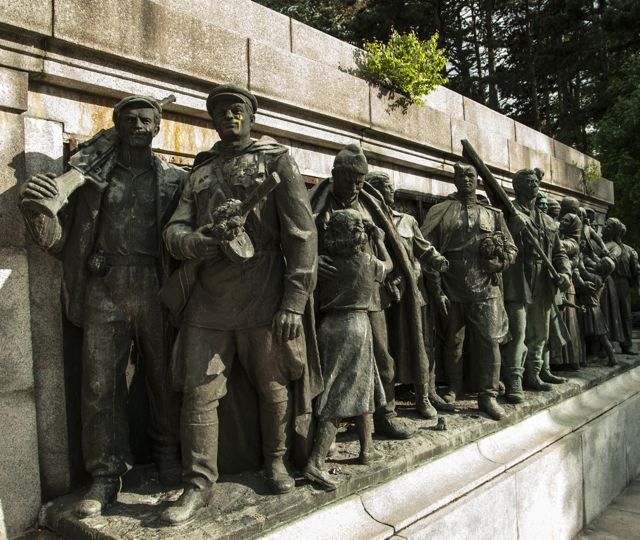Photos: the author
Polina Spartyanova
During the totalitarian regime in Bulgaria, monuments of the partisan movement were erected in different parts of the country to honour the people and events associated with the resistance to fascism on the part of the Bulgarian Communist Party and the Fatherland Front. The memorials praising the anti-fascist struggle of Bulgarian partisans are also called "common graves".
In the southeastern part of Borisova Gradina in Sofia, there is a monument called Common Grave, where 17 prominent figures of the Bulgarian Communist Party and the Workers' Youth Union were buried. The memorial complex was erected in memory of the heroes, antifascists, and it was the work of a large team of authors headed by sculptor Yordan Krachmarov. The monument was opened on 2 June 1956, when Bulgaria marks the Day of Botev and all those who fell for its freedom and independence but at that time, it marked the Day of Botev and all those who fell in the struggle against Ottoman rule, capitalism and fascism.

The central part of the memorial complex consists of a 41-metre high obelisk made of Rila granite that symbolizes the rise of the Bulgarian Communist Party. Bronze sculptures of a man and woman, both of them partisans, proudly walking and bringing the news of the already gained national liberty, stand out in front of it. Below them is a plate with Hristo Botev’s famous quote, "He who dies in a fight for freedom never dies ...". On both sides of the two partisans, two sculpture compositions symbolize the armed struggle of the Bulgarian people against fascism and their joy on the Day of Freedom, 9 September 1944.

Here, as in the Monument to the Soviet Army of Liberation, one sculpture is dedicated to the solemn reception of the Soviet Army and the triumph of the liberated people who had rebelled. At the forefront of the obelisk, two other compositions of sculptures "welcome" visitors to the monument. The composition on the right depicts a mother who sends her son to the partisan front, along with the Soviet soldiers, to continue the fight against fascism. The one on the left depicts representatives of the working, rural and intelligent part of society who fought together to build socialism in the People's Republic of Bulgaria.

Today the monument is not maintained at all and it often becomes the object of vandalism. It is scratched in some places, parts of its bronze sculptures are torn off and the lining behind one of the sculptural compositions has been stolen. Although there was a decision to remove the monument from Borisova Gradina at the beginning of the Bulgarian transition, only the lane leading to it was destroyed at that time. Today a trampled path leads to it. This 1 March, on occasion of Martenitsa day in Bulgaria, Destructive Creation wrapped in white and red the sculptures of the partisan man and woman, who are in front of the obelisk, in order to show them in a different light, as Pizho and Penda.